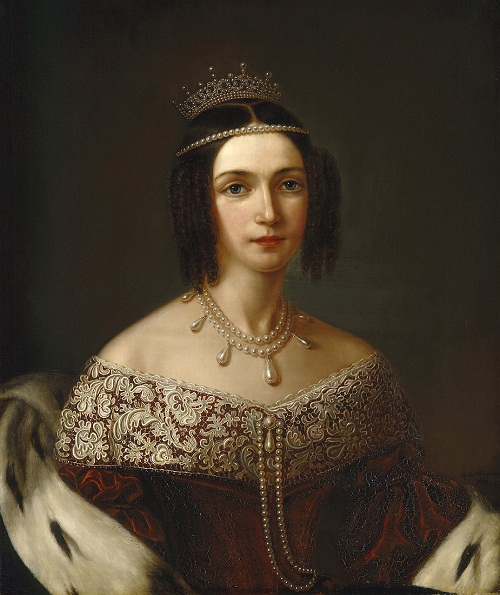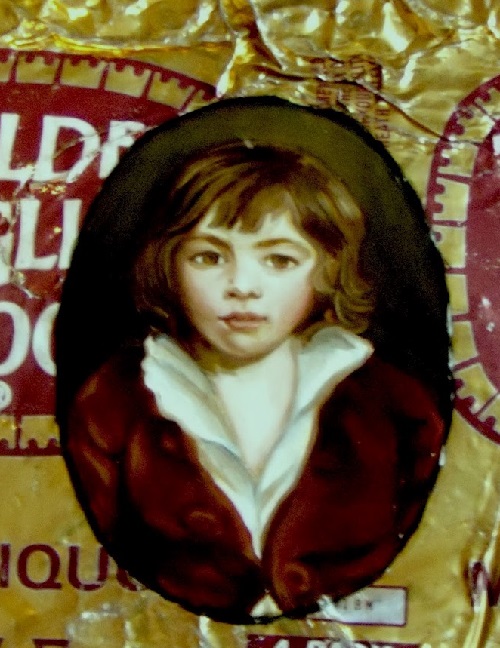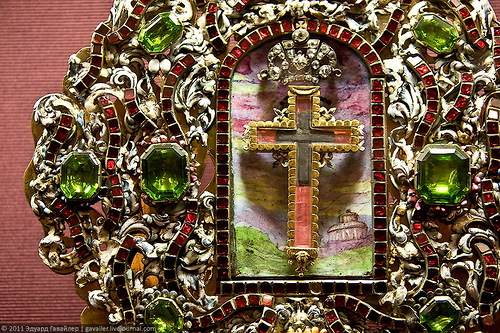Noble aristocratic families Jewels
Noble aristocratic families Jewels
Jewelry of the European Royal Families, as well as the noble aristocratic families not only meant display of wealth they possessed but also symbolized their status. The imperial ladies adorned themselves with littering gems, solid gold and surprisingly luxurious diamonds and pearls. Josephine de Beauharnais was the first wife of Napoleon Bonaparte. Her first husband Alexandre de Beauharnais was guillotined during the Reign of Terror, and she was imprisoned in the Carmes prison until her release five days after Alexandre’s execution. She did not bear Napoleon any children, and he divorced her in 1810. Josephine got lots of love letters written by Napoleon, most of them still exist. She had passionate interest in roses, collected from all over the world.

Maria Therese Amelie de Bourbon – Princess of Naples and Sicily, the Duchess of Orleans. Wife of Louis Philippe I, Queen of France in 1830-1848. Noble aristocratic families Jewels
Maria Amalia of Naples and Sicily (26 April 1782 – 24 March 1866) was a Princess of Naples and Sicily and later the Queen of the French from 1830–1848, consort to Louis Philippe I. The two were married in 1809, three years after they met in Italy whereupon Marie-Amelie became the Duchess of Orleans. Prior to her husband’s rise to power, Maria Amalia and her husband had to cope with a persistent money problem due to the fact that they had no income aside from that which they were given by the English crown.

Sunburst diamond jewel, circa 1880. Designed as a stylized sun embellished with circular-cut and cushion-shaped stones, mounted as a clasp on four uniform rows of cultured pearls
Josephine Maximilienne Eugenie Napoleone (14 March 1807 – 7 June 1876) was Queen consort of Sweden and Norway as the wife of King Oscar I. Josephine was interested in gardening, enjoyed painting, and was involved in charity and reforms in Sweden. Her interest in art was active, she greatly supported the career of the painters Sofia Adlersparre, Helena Sophia Isberg, and also encouraged the artistic interest and talent of her own daughter, Princess Eugenie, who became a talented amateur artist. She was also involved in a several social projects. Her marriage was happy, she and her husband shared an interest in culture and had similar personalities. In 1832, she wrote in her diary that a woman should suffer in silence. Josephine died in Stockholm in 1876 at the age of sixty-nine and received a Catholic burial. Her last words were “I am going home now. I am very happy.”
Maria Christina of the Two Sicilies (27 April 1806 – 22 August 1878) was Queen consort of Spain (1829 to 1833) and Regent of Spain (1833 to 1840). Maria Christina married King Ferdinand VII of Spain on 11 December 1829 in Madrid. Ferdinand was her uncle by birth and by marriage. Maria Christina gave birth to two daughters, Isabella – the future Queen Isabella II, and the Infanta Luisa Fernanda. On 28 December 1833, shortly after the death of Ferdinand VII, Maria Christina had secretly married an ex-sergeant from the royal guard, Agustin Fernando Munoz (1808–1873). Maria Christina and Munoz had several children together while trying to keep their marriage a secret.

Princess Beatrice, married Princess of Battenberg – a member of the British royal family, the youngest child (the fifth daughter) of Queen Victoria and Prince Albert
Beatrice Mary Victoria Feodore, later Princess Henry of Battenberg (14 April 1857 – 26 October 1944) was the fifth daughter and youngest child of Queen Victoria and Prince Albert. Juan Carlos, King of Spain, is her great-grandson. Beatrice has the distinction of being the last of Queen Victoria’s children to die, 66 years after the first, her sister Alice. Beatrice’s childhood coincided with Queen Victoria’s grief following the death of her husband, Albert, Prince Consort, on 14 December 1861. As Beatrice’s elder sisters married and left their royal mother, Queen Victoria came to rely on the company of her youngest daughter, whom she called Baby for most of her childhood. Beatrice, who was brought up to stay with her mother always, soon resigned herself to her fate.
Noble aristocratic families Jewels

sapphire and diamond necklace by Mellerio dits Meller, circa 1870. From the Collections of Princess Marie Bonaparte and Princess Eugenie of Greece and Denmark.

A late-nineteenth-century sapphire and diamond brooch in the form of a fleur-de-lys, symbol of France. (Sotheby’s)

sapphire and diamond necklace by Mellerio dits Meller, circa 1870. From the Collections of Princess Marie Bonaparte and Princess Eugenie of Greece and Denmark.

A set of diamond jewellery, second half 19th century. Silver gold. Tiara, necklace, brooch, earrings and ring, with old- and antique cut diamonds

Pearl and Diamond Corsage that belonged to the Queen Olga, that Princess Maria Bonaparte looks in the photo above if we look more closely

The Olga aquamarine and diamond set, formerly belonging to Princess Paley. Cartier, 1912. Aigrette, necklace Princess Olga Valerianovna Paley

A set of diamond jewellery, second half 19th century. Silver gold. Tiara, necklace, brooch, earrings and ring, with old- and antique cut diamonds
liveinternet.ru/users/lassi1

























